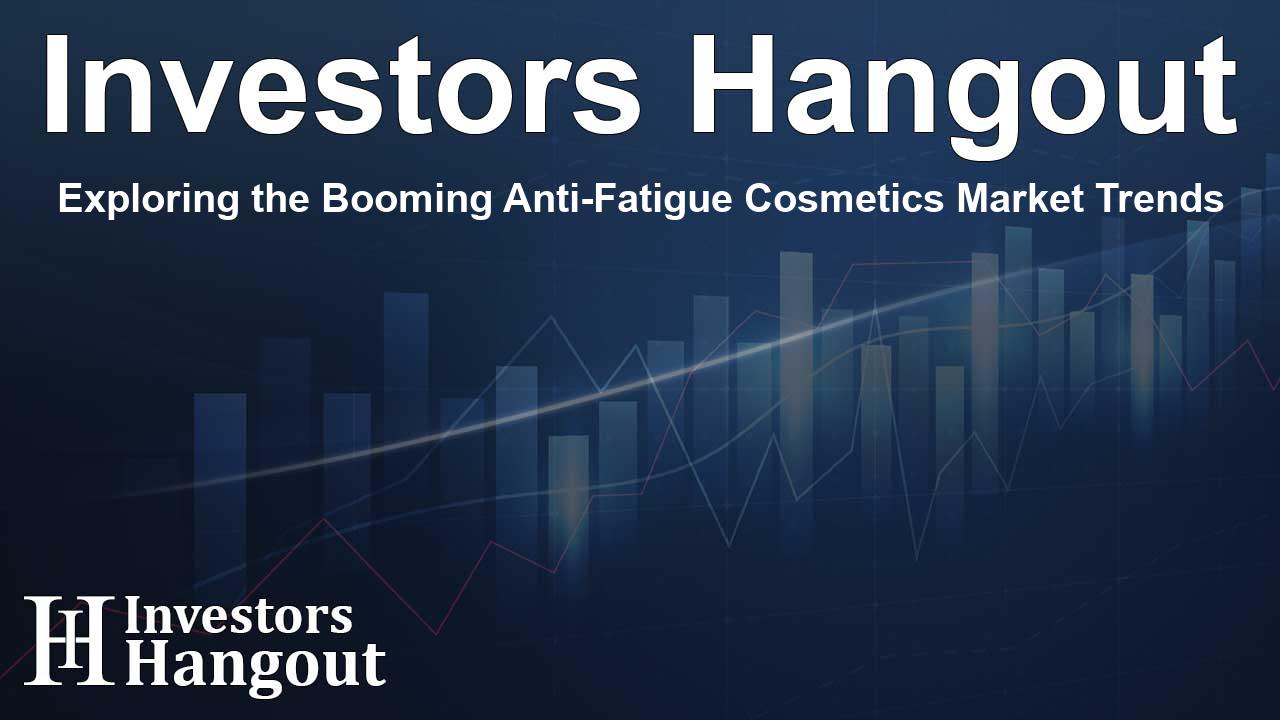Exploring the Booming Anti-Fatigue Cosmetics Market Trends

Understanding the Anti-Fatigue Cosmetics Market
The global anti-fatigue cosmetics market is poised for significant expansion, expected to flourish from USD 17.8 billion in 2023 to an impressive USD 28 billion by 2033. This growth represents a compound annual growth rate (CAGR) of 4.63%, showcasing a rising consumer demand for products that combat signs of fatigue and stress.
Factors Driving Market Growth
With modern lifestyles becoming increasingly stressful, the need for products that help mitigate signs of tiredness is escalating. Urbanization and pollution contribute to fatigue, prompting a demand for self-care products. This market reflects an increased consumer focus on holistic well-being, fueled by social media trends and innovations in cosmetic formulations. The aging population also plays a critical role, as older consumers seek rejuvenation and solutions that enhance their appearance.
The Challenges Ahead
Despite promising growth, the anti-fatigue cosmetics market faces hurdles such as high research and development costs for creating effective products. These expenses may translate to higher prices, limiting accessibility for some consumers. Additionally, navigating a complex regulatory environment can pose challenges for brands aiming for global distribution. Each region holds unique standards for product approvals, which may affect market entry strategies.
Market Segmentation Overview
In analyzing the products in the anti-fatigue cosmetics industry, creams emerge as the frontrunners. This segment is expected to maintain the largest market share due to their effectiveness in addressing skin concerns caused by fatigue, such as puffiness and dullness. Following closely are oils, lotions, serums, and gels.
Gender Dynamics in Consumption
The market distinguishes between women and men as end users, with women anticipated to dominate sales significantly. Women generally incorporate a wider variety of products into their beauty routines and are increasingly inclined to invest in cosmetics that target signs of fatigue, such as dark circles and fine lines.
Distribution Channels in the Market
The distribution channels for anti-fatigue cosmetics show a strong preference for offline sales. Despite the rise of online shopping, brick-and-mortar stores, health and beauty establishments, and supermarkets continue to hold substantial market shares. These traditional retail avenues allow consumers to experience products firsthand and receive personalized recommendations, enhancing their shopping experience.
Regional Insights and Trends
Regionally, North America is projected to hold the largest share of the anti-fatigue cosmetics market. Consumers in this region seek effective solutions for visible signs of fatigue and enjoy access to major cosmetic brands with well-established distribution networks. Meanwhile, European consumers trend towards self-care, propelling the demand for cosmetics designed to rejuvenate and refresh their appearance.
Competitive Landscape of the Market
The report highlights notable players in the anti-fatigue cosmetics arena, including Shiseido Company Limited, Lancome, L'Oréal, REN Clean Skincare, and Estée Lauder Companies among others. A comprehensive competitive analysis includes evaluations of product offerings, geographic reach, strategies, and market positioning. The ongoing developments in product innovation and corporate collaborations play a crucial role in maintaining competitive advantage.
Recent Developments Shaping the Market
In recent months, several companies have expanded their footprints in the beauty and wellness industry. For instance, a prominent beauty brand has announced plans to open over 100 beauty and wellness clinics, targeting heightened consumer engagement and retail presence.
Frequently Asked Questions
What are anti-fatigue cosmetics?
Anti-fatigue cosmetics are products designed to reduce signs of fatigue on the skin, such as puffiness, dark circles, and dullness.
What is driving the growth of this market?
Increases in stress levels, lifestyle changes, and a keen interest in self-care and rejuvenation are major factors fueling market growth.
Who are the primary consumers of anti-fatigue cosmetics?
While both men and women use these products, women represent the largest segment due to their extensive cosmetic routines.
What challenges does the anti-fatigue cosmetics market face?
Challenges include high R&D costs and the complexity of navigating regulatory standards across different regions.
What regions are leading in anti-fatigue cosmetics sales?
North America is expected to lead the market share, followed by Europe, where consumer awareness and demand for self-care products are rising.
About Investors Hangout
Investors Hangout is a leading online stock forum for financial discussion and learning, offering a wide range of free tools and resources. It draws in traders of all levels, who exchange market knowledge, investigate trading tactics, and keep an eye on industry developments in real time. Featuring financial articles, stock message boards, quotes, charts, company profiles, and live news updates. Through cooperative learning and a wealth of informational resources, it helps users from novices creating their first portfolios to experts honing their techniques. Join Investors Hangout today: https://investorshangout.com/
Disclaimer: The content of this article is solely for general informational purposes only; it does not represent legal, financial, or investment advice. Investors Hangout does not offer financial advice; the author is not a licensed financial advisor. Consult a qualified advisor before making any financial or investment decisions based on this article. The author's interpretation of publicly available data shapes the opinions presented here; as a result, they should not be taken as advice to purchase, sell, or hold any securities mentioned or any other investments. The author does not guarantee the accuracy, completeness, or timeliness of any material, providing it "as is." Information and market conditions may change; past performance is not indicative of future outcomes. If any of the material offered here is inaccurate, please contact us for corrections.